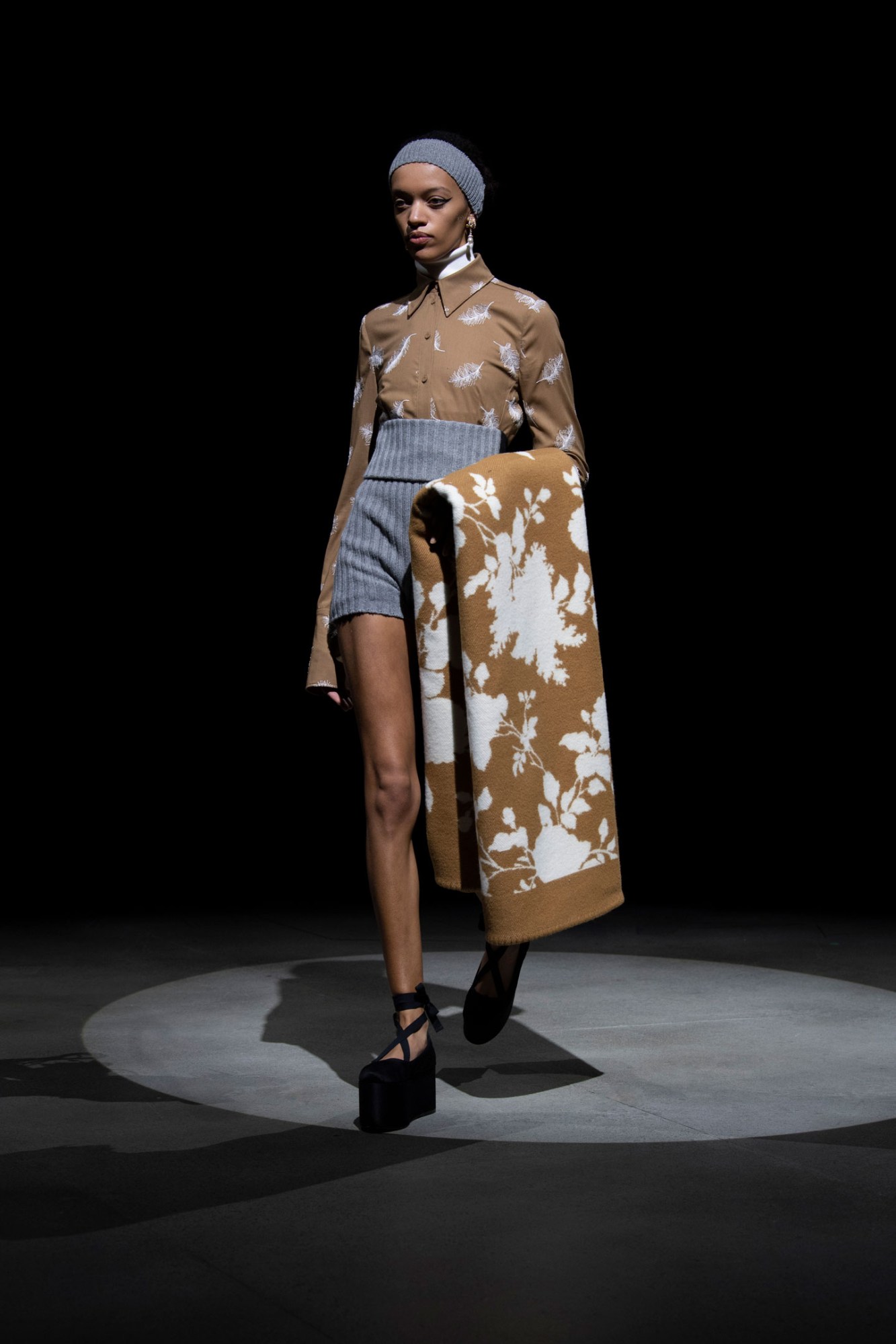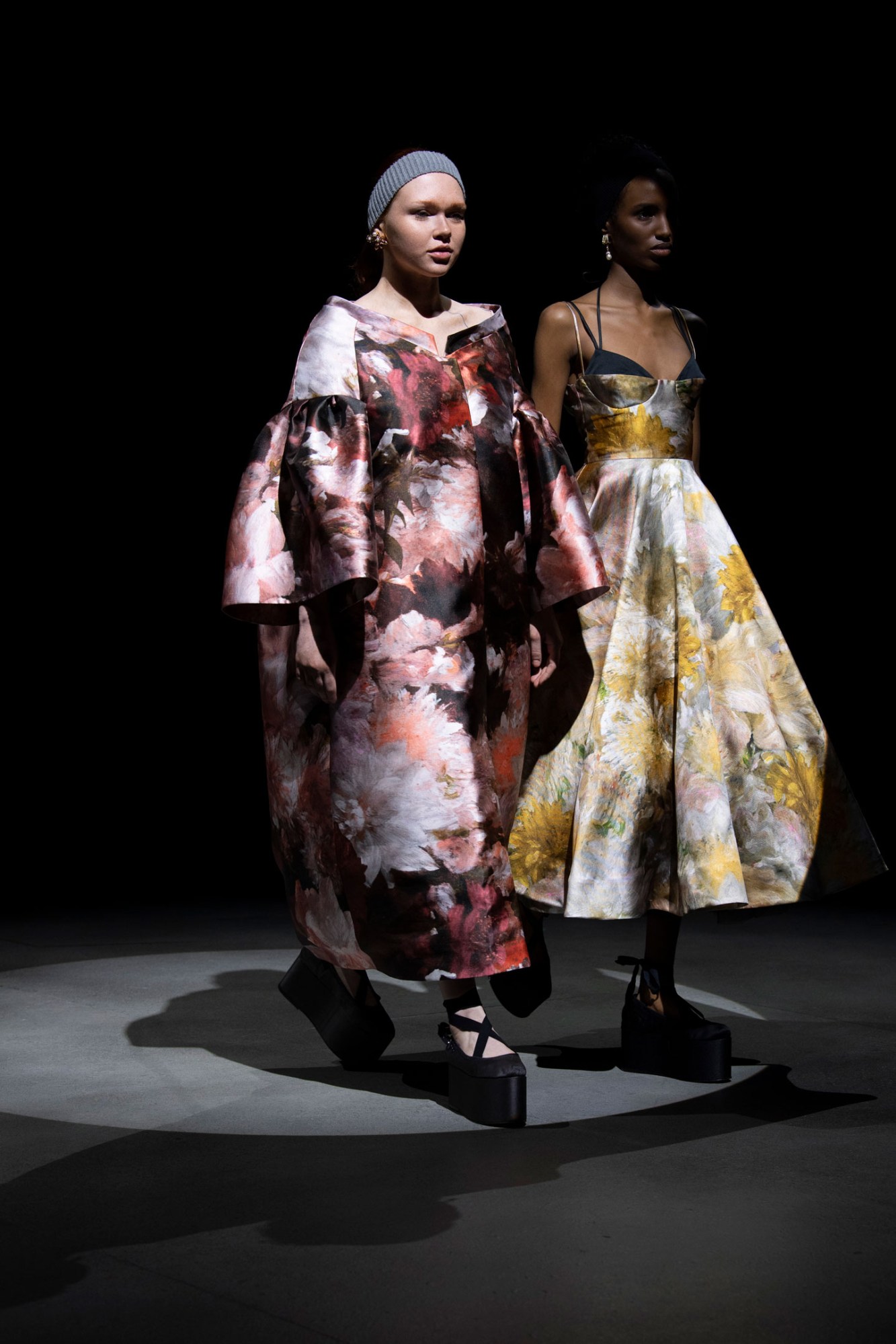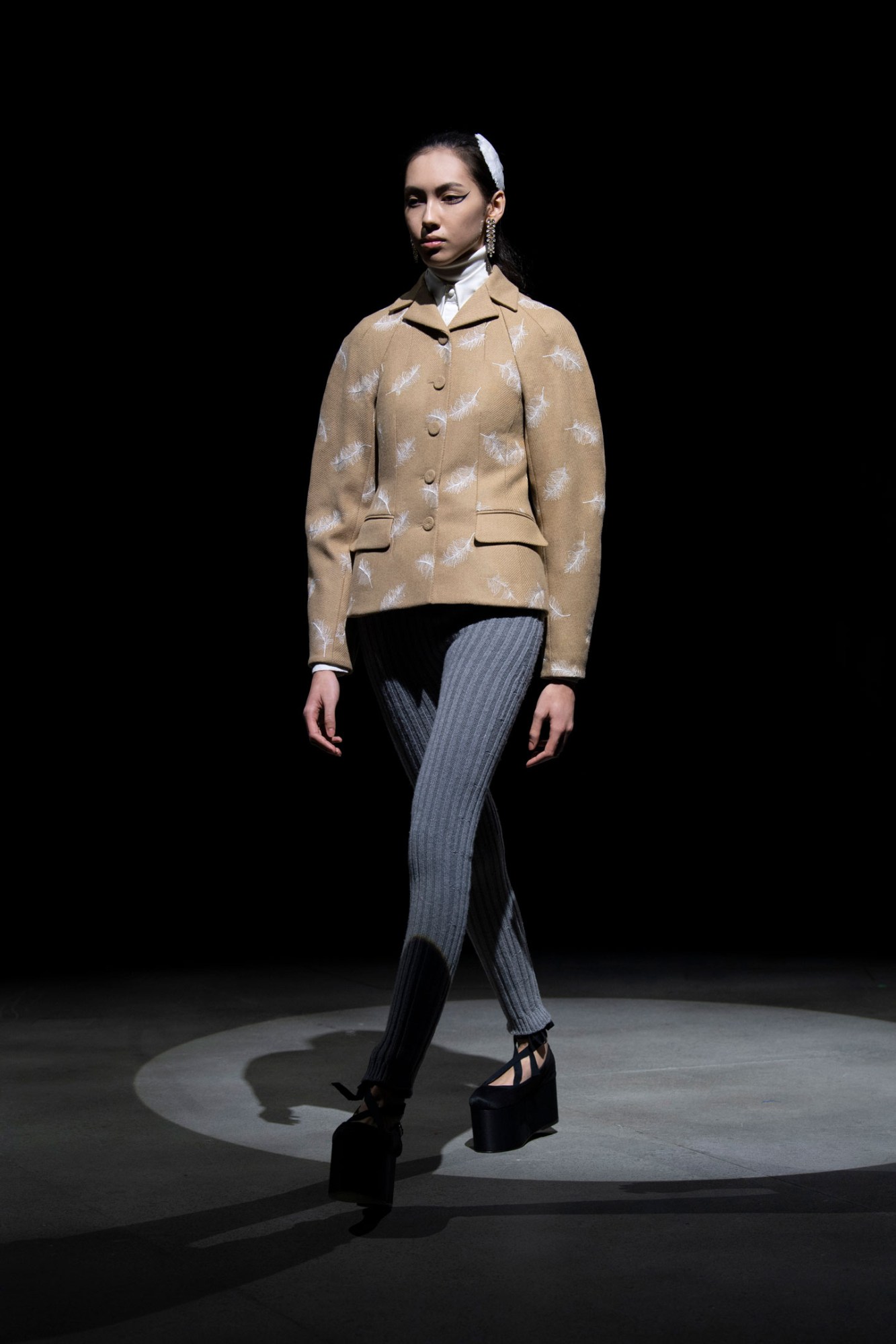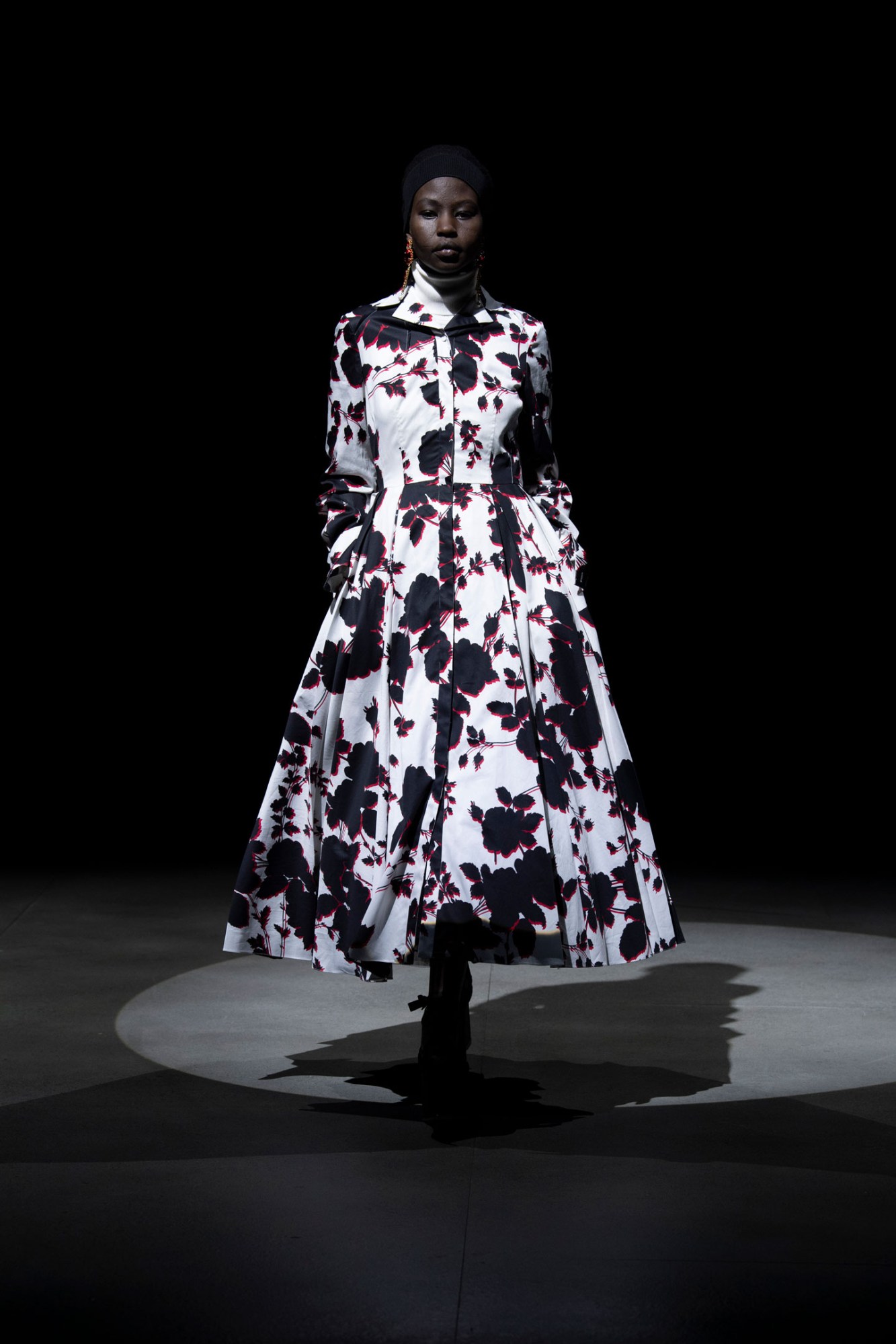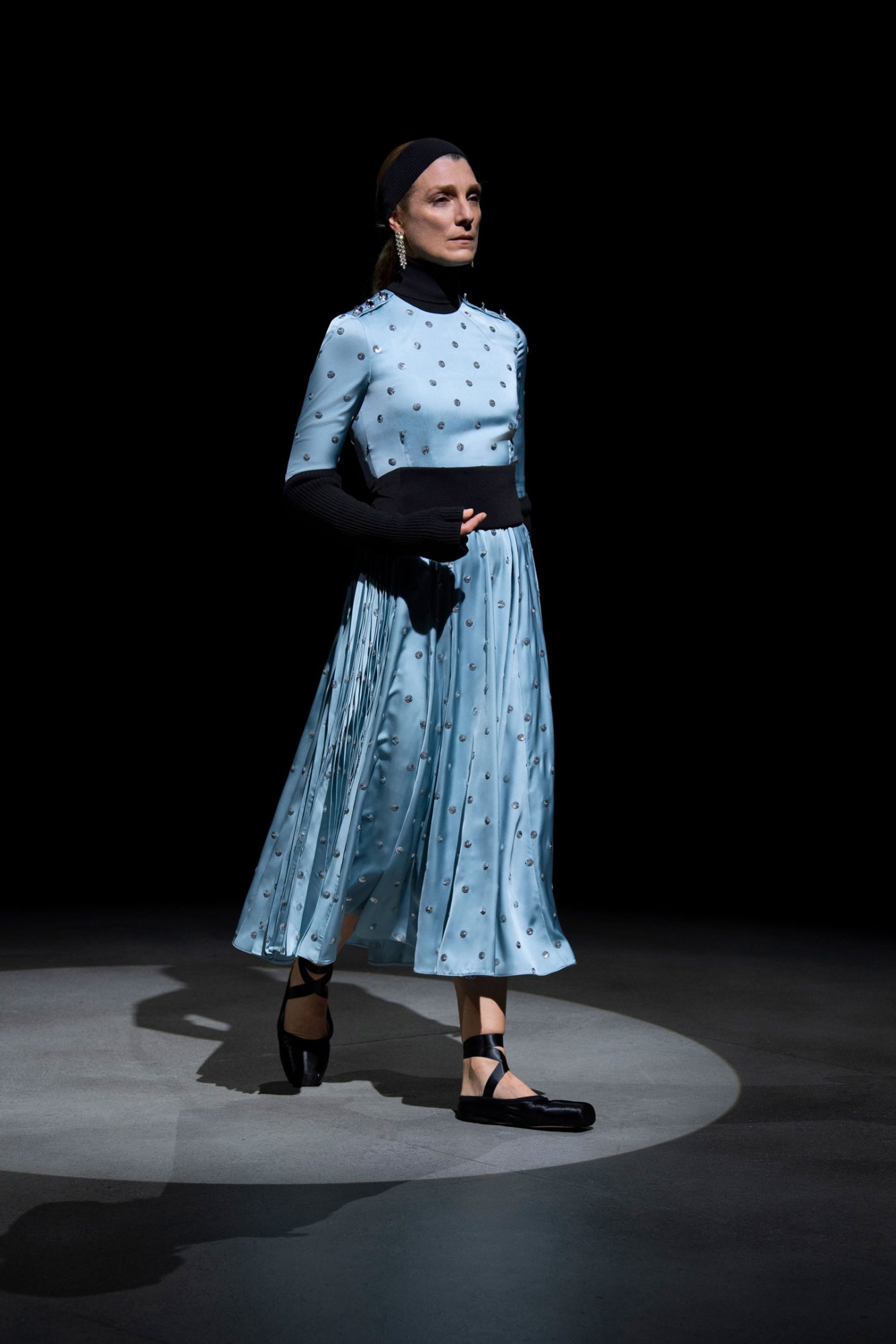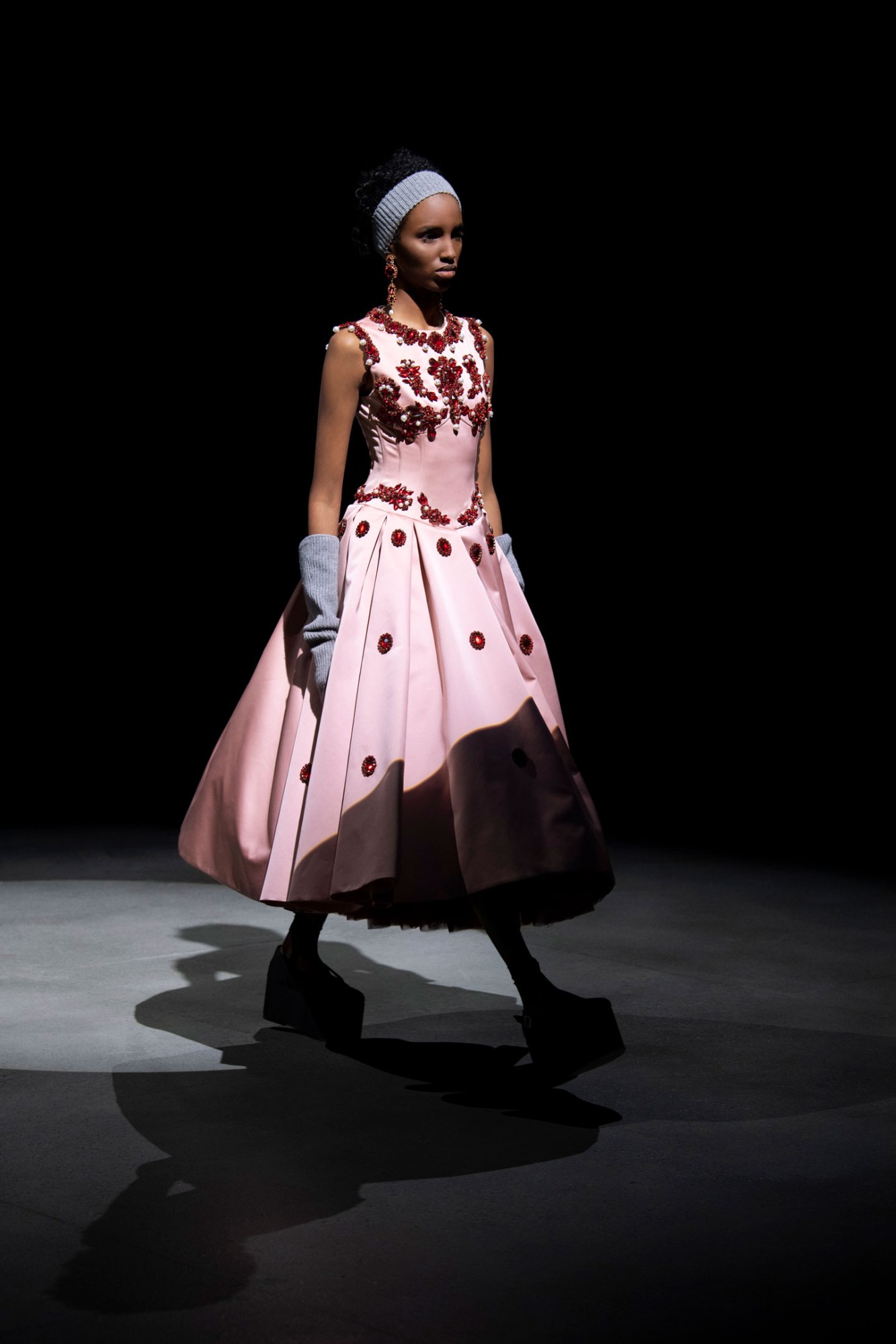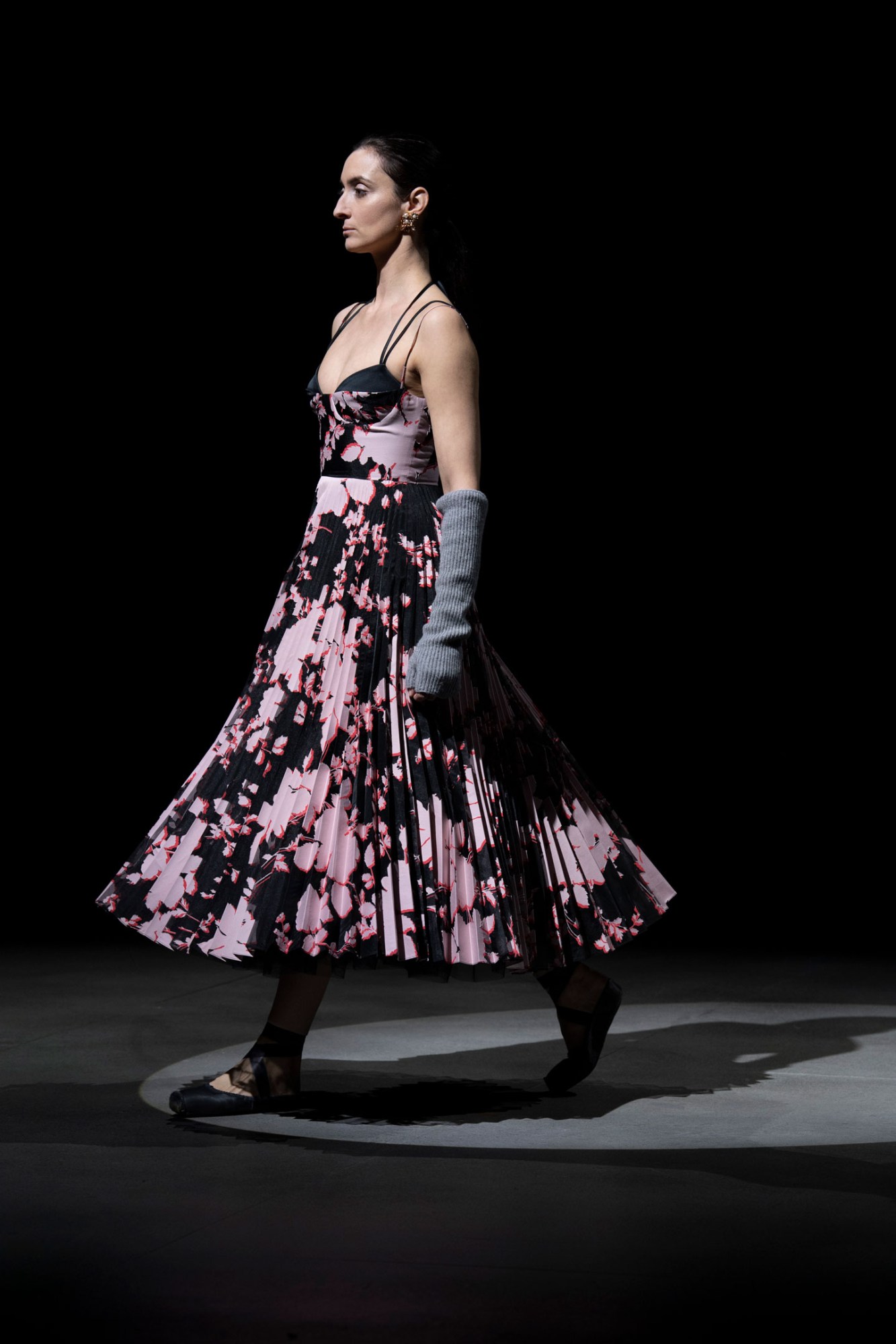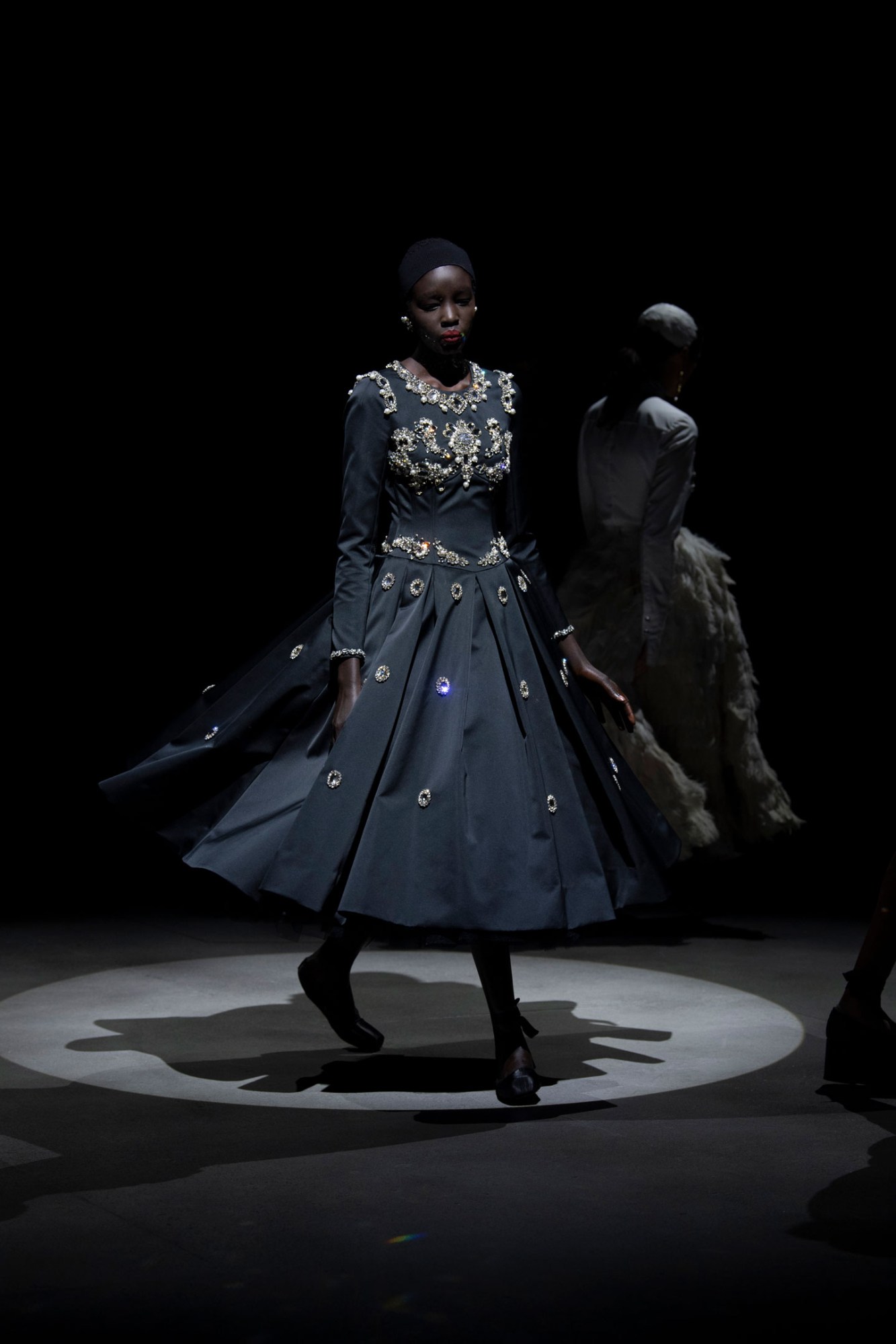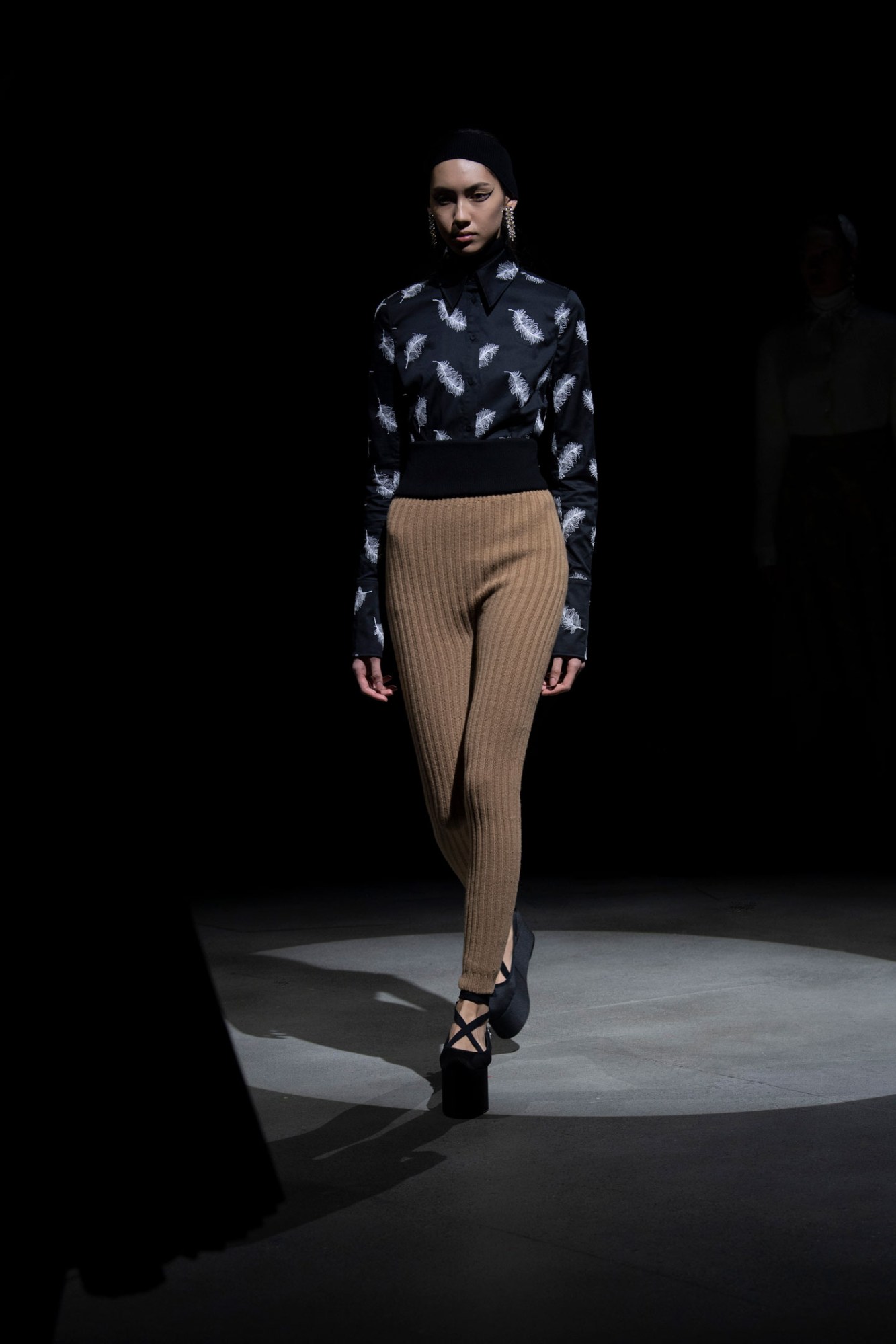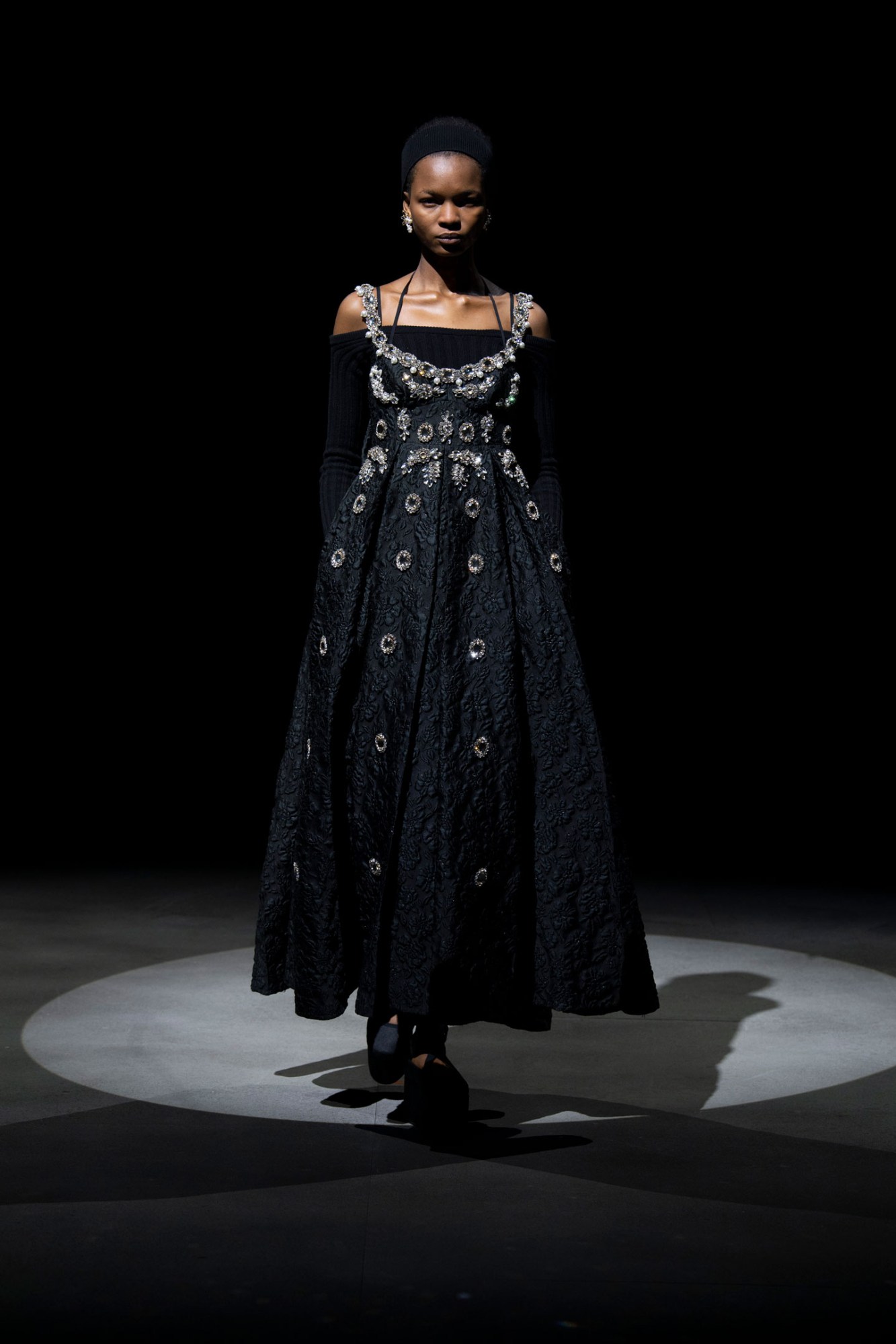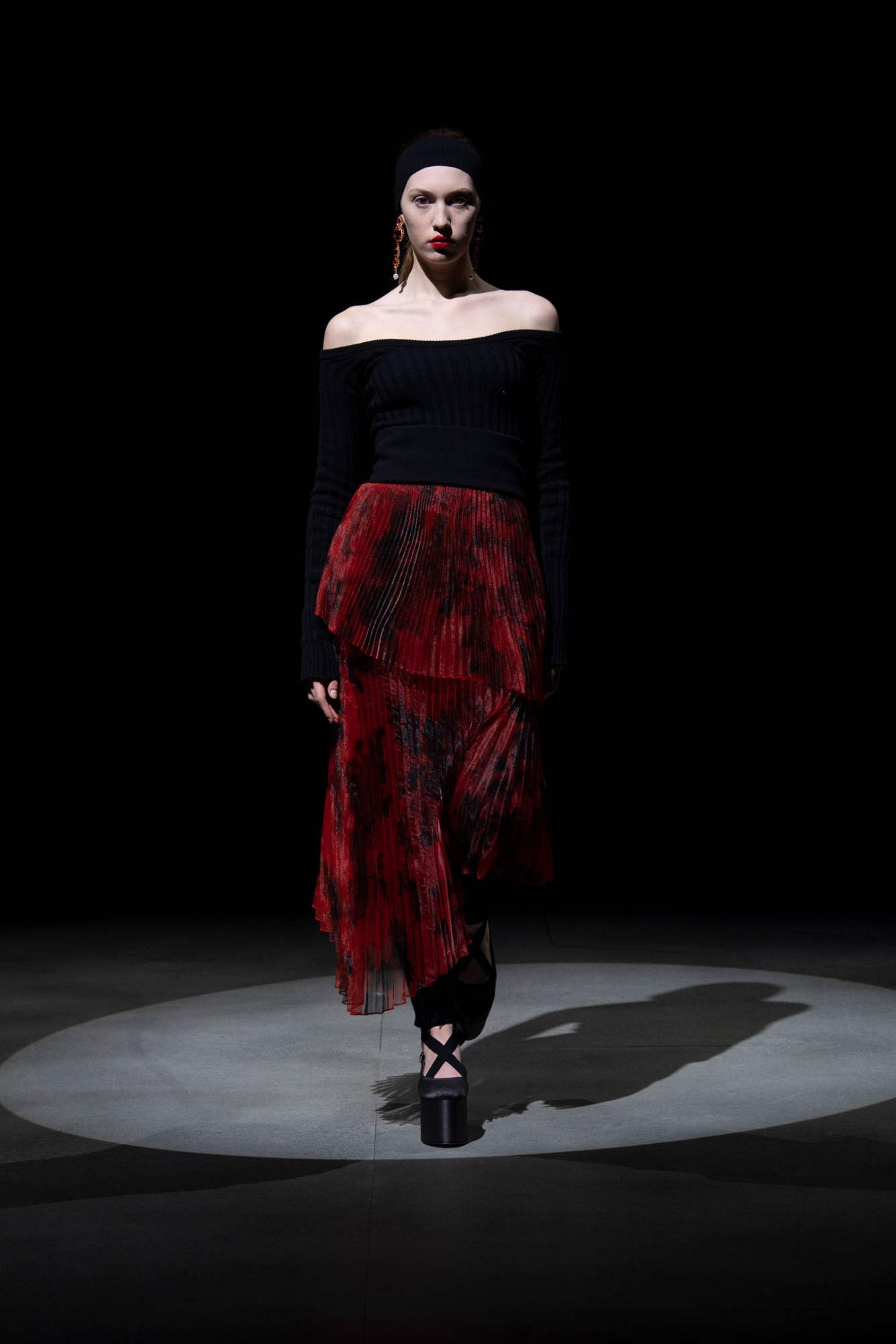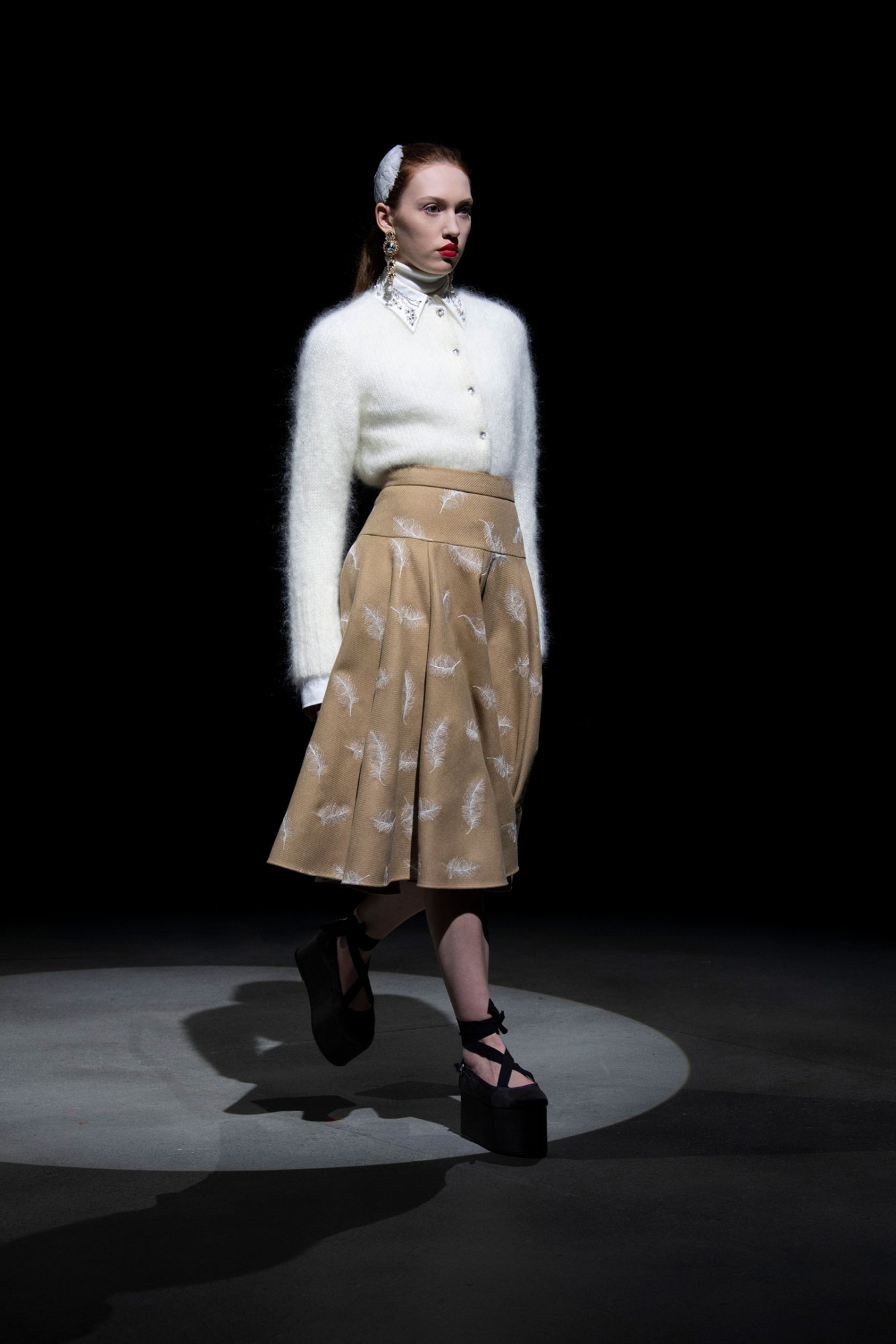There’s nothing like being backstage at the ballet where the thud of dancers’ feet can be heard alongside the quiet chatter of the chorus, ballerinas in leg warmers and cosy cover-ups right up to the moment they leap onto the stage in their tutus and tights. Yet, right now, the curtain remains drawn on the world of dance as venues and opera houses are closed during lockdown. For AW21, Erdem has been dreaming of the time that he designed costumes for The Royal Ballet in 2018. His new collection is a self-described love letter to the world of dance, an exploration of the onstage and offstage style of history’s most illustrious ballerinas.
“I got to spend a lot of time at the Royal Opera House, standing in the wings of the stage, watching the dancers take their position in and out of the spotlight and watching what was happening when the curtains were drawn,” he explains. “All this happens underneath this gigantic poster of Rudolf Nureyev, who oversees the backstage.” And so, as with every season, Erdem began his voyage into the past, delving through historical research into fascinating women from the annals of time. This collection saw him focus on the Royal Ballet’s former prima ballerina Margot Fonteyn, during the period of her career when she began dancing with Rudolf Nureyev. When they met in 1961, he was 23 and she was 42. The generational tension became fruitful ground for Erdem.
He became fascinated by the pictures of her in ribbed-knit wool leotards and leggings, as well as those of her in dazzling costumes — always exaggerated, as Erdem points out, so that people at the back of the auditorium could get a glimpse — as well as her time in Paris, where she wore couture opera coats and whittled-waist dresses. Naturally, The Red Shoes was a reference, too — and the idea of the arc of a dancer’s life, in and out of the spotlight, became the collection’s foundation.
“There is this preciousness contrasted with the undoneness of the rehearsals,” Erdem explains, which led him to create a collection that is just as much about the cashmere separates — including leggings, bodysuits, romper shorts, long gloves and headbands — layered up with his signature ornate fabrics and silhouettes: organza dresses with sequin feathers, bejewelled duchess gowns, ostrich plume skirts and sheeny watercolour satin hourglasses. Clothes fit for society swans, and dancing ones too.
“Really, the show became what happens backstage before a performance — it’s almost a bit Hitchcockian,” Erdem adds. Among the cast of models is Christina Arestis, Elizabeth McGorian, Zenaida Yanowsky and Marguerite Porter, all retired ballerinas who danced in Swan Lake with Nureyev. They bring an air of grace and maturity to a cast that, for the first time, comprised a range of sizes, all of whom were coached in balletic movements by Edward Watson, a principal dancer at The Royal Ballet.
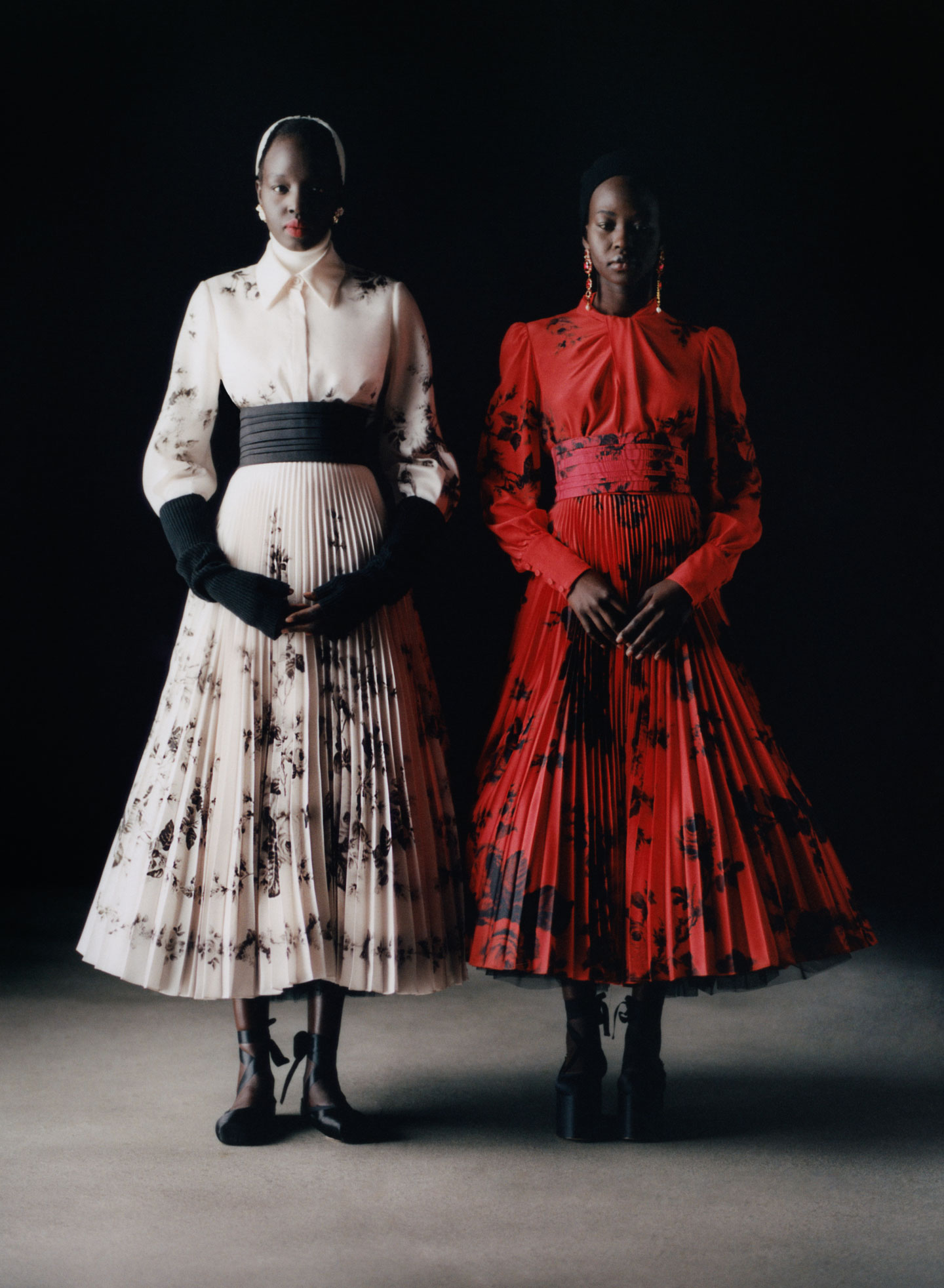
Of course, in Erdem’s world, every day is an opportunity for displays of glamour and opulence. But the current mood for comfort may have seeped in, courtesy of the sense of off-duty casualness that happens backstage. Yes, there was plenty of cashmere, but there was also a cotton poplin shirt dress and a denim jacket, for instance, both of which were given the mid-century couture treatment; their necks widened and skirts volumised. “It’s about taking something that feels very everyday and making it quite decadent,” Erdem says. It was important the collection had this richness, given this situation we’re in. It’s almost like the end of the war — it’s important to have something that feels optimistic.”

